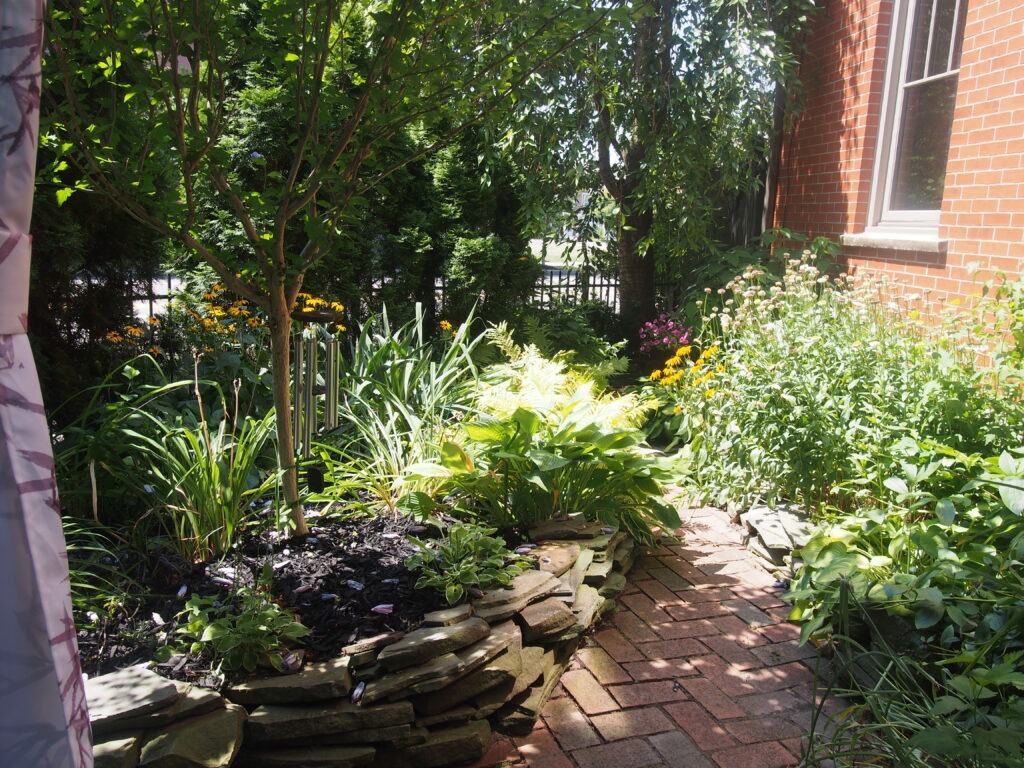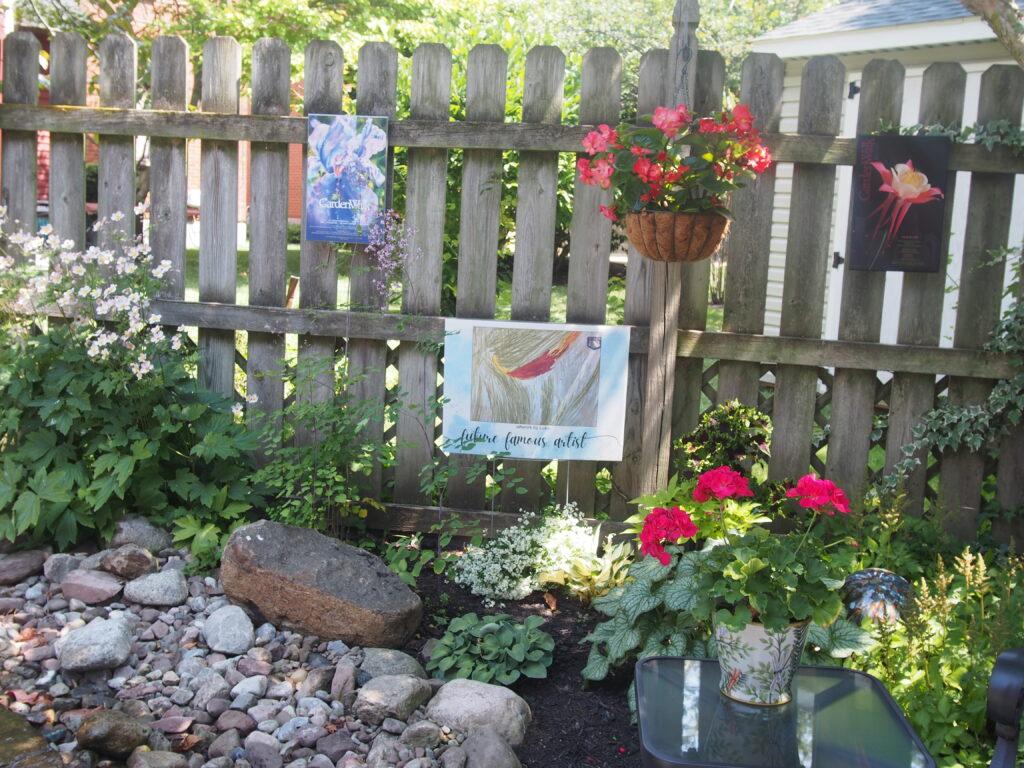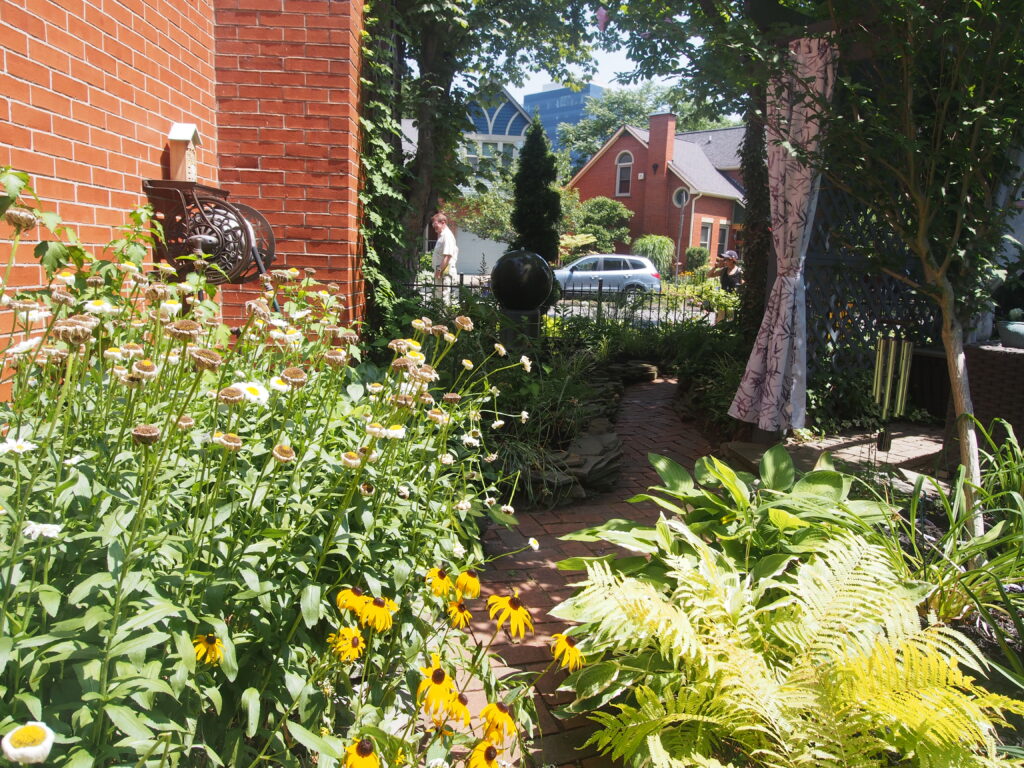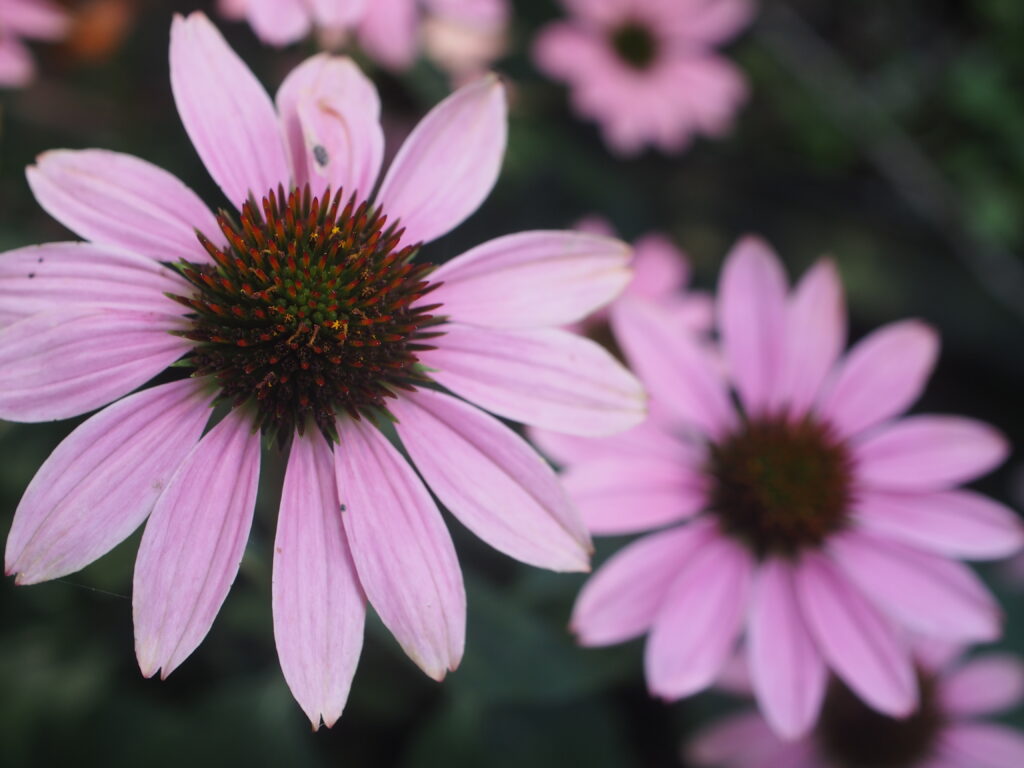Recently, I invited you to “ask me anything.” This is one of my most favorite prompts from the quarterly Ultimate Blogging Challenge. I always love the questions and I really enjoy chatting with you about them. So… here goes.

Question from Nonnie Vivian: “So I have issues with what is native and what is invasive in my gardens. Some of the invasive just love to enter without permission. What gives!”
Those darn invasives. They are super rude. They are also super aggressive. They spread in a variety of ways. One way is by getting help from birds, who eat the seeds and then poop them out. These plants tend to be very adaptable to pretty much any soil. Wherever the seeds land, they will germinate. Another way that aggressive invasives spread, seemingly at random, is because they have super long root systems. For example, a Japanese knotweed has, according to information I found online, ” horizontal roots, or rhizomes, (that) can extend up to 65 feet underground and produce new plants from (really tiny fragments).” Japanese knotweeds roots are hard to eradicate. I remember one time when I was still a member of the Conservation Advisory Board. We were working on digging up invasives from the Town Commons. This individual tried unsuccessfully to dig up the really embedded roots, but that wasn’t happening. His next step was to furiously try to remove the annoying plant villain with a crowbar. I don’t remember whether or not it worked. I’m just sorry I didn’t bring a camera for the Big Event.
And about the issues with what is native and what is invasive in your garden, I do have something that could help identify your native plants. It’s an illustrated guide to native plants for your garden, produced by Buffalo Niagara Waterkeeper. You’re certainly welcome to take a look at this book.

From Kebba Buckley Button: “Alice, I have long enjoyed your images and your reflections from walks and other adventures you’ve taken. Today’s flowers are so beautiful, and the images so sharp! When did you realize you loved taking beautiful photos? What camera/s are you using? How did you find out about the garden walk you went on recently? I love your aesthetic sense, your kindness, and your creativity. Looking forward to what else you may share, ever!”
Thank you so much, Kebba. When I started doing freelance work for the Island Dispatch in 2006, I was told that I had to take my own photographs. At that point, I didn’t even have a camera. I was using disposable cameras that I bought at the drugstore and took back to be developed. I wasn’t sure how that was going to work. Fortunately, I was able to apply the skills that I learned in my drawing and painting classes to photography. That helped me so much because I was able to transfer skills at composition, such as the rule of thirds and the idea that pictures are more dynamic when they are asymmetrical. I decided to do a 366-day photograph project in 2016, which gave me a lot of practice. The goal was to take a picture every day for an entire year. There were prompts, which I tried my best to follow. It was great practice and it really helped me build my skills for photography.
As for my camera, I use an Olympus OM-D, It takes micro 4/3rds lenses. There are a number of different cameras that use that lens size, which is good, especially when your camera body croaks, and you have a bunch of lenses.
How did I find out about the Garden Walk? The Grand Island one is something that I’ve done for a number of years because I take pictures of it for the newspaper. People send press releases and articles to me with all of the information, for me to forward to my editor. The Buffalo Garden Walk is something I’ve enjoyed for a while, and I look for it each year.
Thank you for your kind remarks about me. You are very kind, as well, and your blog is always fascinating and informative. I look forward to reading it.

From Martha: “What beautiful flowers Alice and I love today’s topic! Okay let me think, hmmmm, thinking, thinking… oh I got it! I’ve seen the beautiful flowers pictures you take around town and at festivals. Do you have any in your yard and if so what is your favorite flower?”
I actually live in an apartment building, and I don’t have my own garden. I go to other people’s houses and tend to their gardens. In one garden, all of the flowers are pink and purple. Another customer has a collection of native plants that are actually volunteers. The seeds spread through the air, and they landed in this garden and germinated. But my favorite thing about this yard is the Rose of Sharon shrubs near the road. A few years ago, my customer asked me to plant six sticks with leaves. Really, that’s what they were. Sticks with leaves. She told me they were Rose of Sharon. I planted them and hoped that they would grow. This year, five or six years later, I was super happy to see that four of the sticks with leaves have become shrubs taller than me (seriously, that doesn’t take much since I am Fun Sized). And even more exciting is the sight of so many flowers on those shrubs. I feel like a proud parent. I know that makes little sense, but it feels as if my “babies’ have grown up into tall… plants.
My favorite flower is the portulaca. It’s also known as the moss rose. It’s a little plant and it comes in many pastel colors. It just exudes happiness.
Thank you so much for asking, Martha!

Kristine: “I love your beautiful garden photos! Your flowers are truly amazing. I usually focus more on growing veggies, but I also have some flowers in the front garden bed by the road. I’ve found it challenging to find the right middle-sized plants. I usually plant sunflowers and hollyhocks along the wooden fence line, and something 12-18 inches in the front, like zinnias. I always struggle to find the perfect middle row plant. Do you have any suggestions?”
Hi Kristine. Thank you for the question. I’m not sure exactly where you are or what your soil type is, so I can only make guesses. Here are some medium sized perennials I would suggest::
- Solomon’s Seal. It’s a nice understory plant that will grow to one to three feet. It attracts birds and butterflies.
- Eastern Coneflower: It’s an easy plant to grow and very colorful. It grows to one to three feet, and it attracts birds.
- Black-eyed Susan: This plant is also easy to grow and it adds vivid color to any garden. It grows to one to three feet, and it attracts birds and butterflies.
- Fall Phlox: The pink and purple flowers of this perennial bloom from July to September. It grows to two to four feet, and it attracts hummingbirds and butterflies.
- Wild Bergamont: Oh, this is wonderfully purple. It’s a great plant to grow as it’s tolerant of some less than ideal soils. It grows to two to four feet, and it attracts birds, hummingbirds and butterflies.
Enjoy your garden and thank you for asking!

Alice, thank you for all these answers! I love hearing about the gardens, and now I know what camera you’re using. If it ever croaks, you’ll have lenses for the next camera (laughter emoji). You always give me something to think about, and tonight, I’m thinking about whether there are more heatproof plants I can use in my own garden. 🙂
You might want to think about succulents and cactuses because they are fine with less water. Any kind of succulent will do well in your climate. I looked for some plants that are heat resistant and found:
Butterfly weeds: it attracts butterflies, bees and hummingbirds
Coreopsis
Latris: also attracts pollinators
Salvia: pollinators like this plant
Sunflower
Zinnia
Hope that helps you get a wonderful, colorful garden, alive with pollinators!
What interesting questions and answers Alice! So it sounds like you have lots of gardens just spread out around your area. How cool is that to tend to gardens and make them beautiful! I love Rose of Sharon and so happy they starting blooming!
It’s been such a good experience. One of the great thing about gardening is that you can see the results of your work right away. And it provides so much happiness. I too love Rose of Sharon!